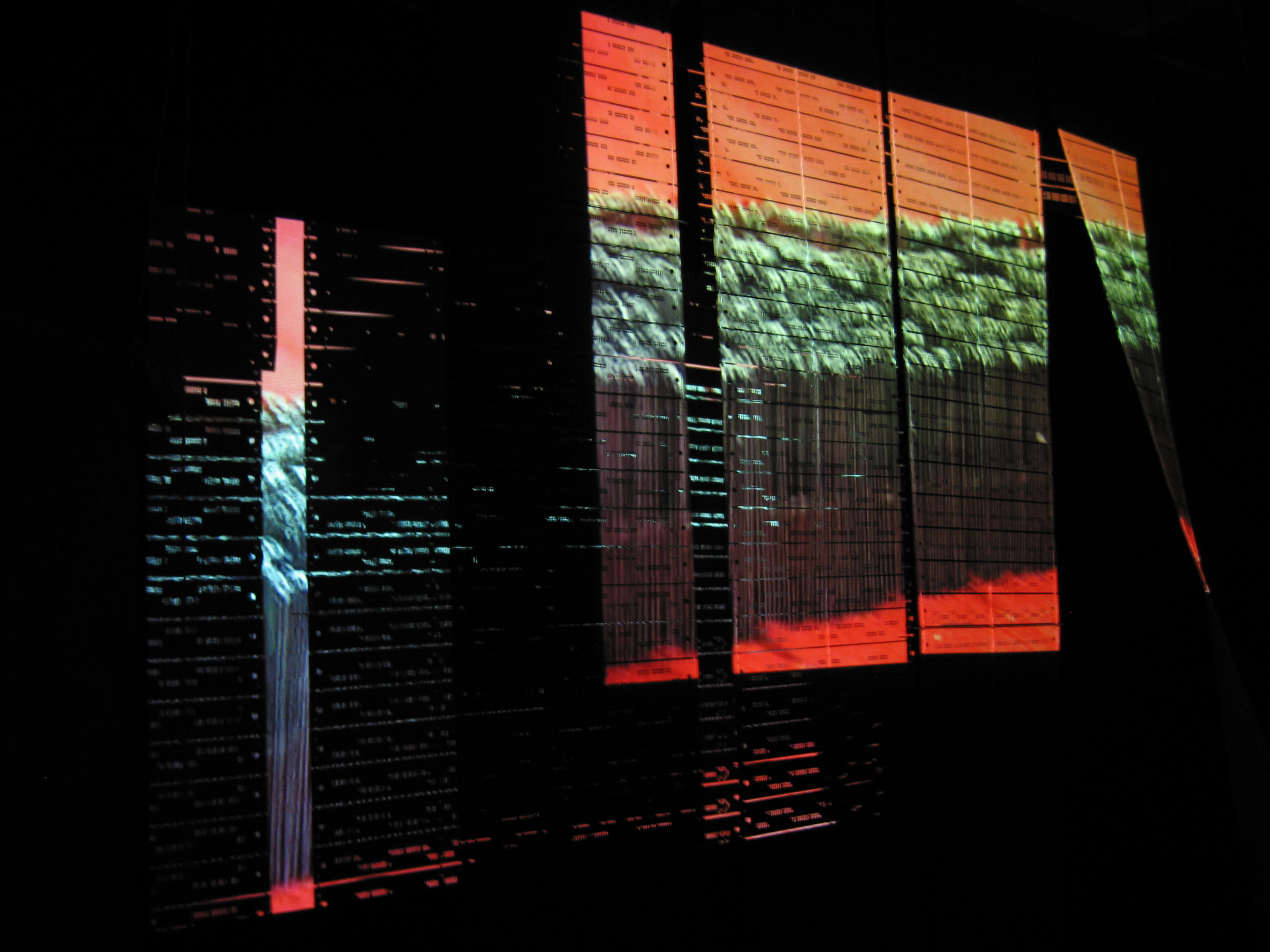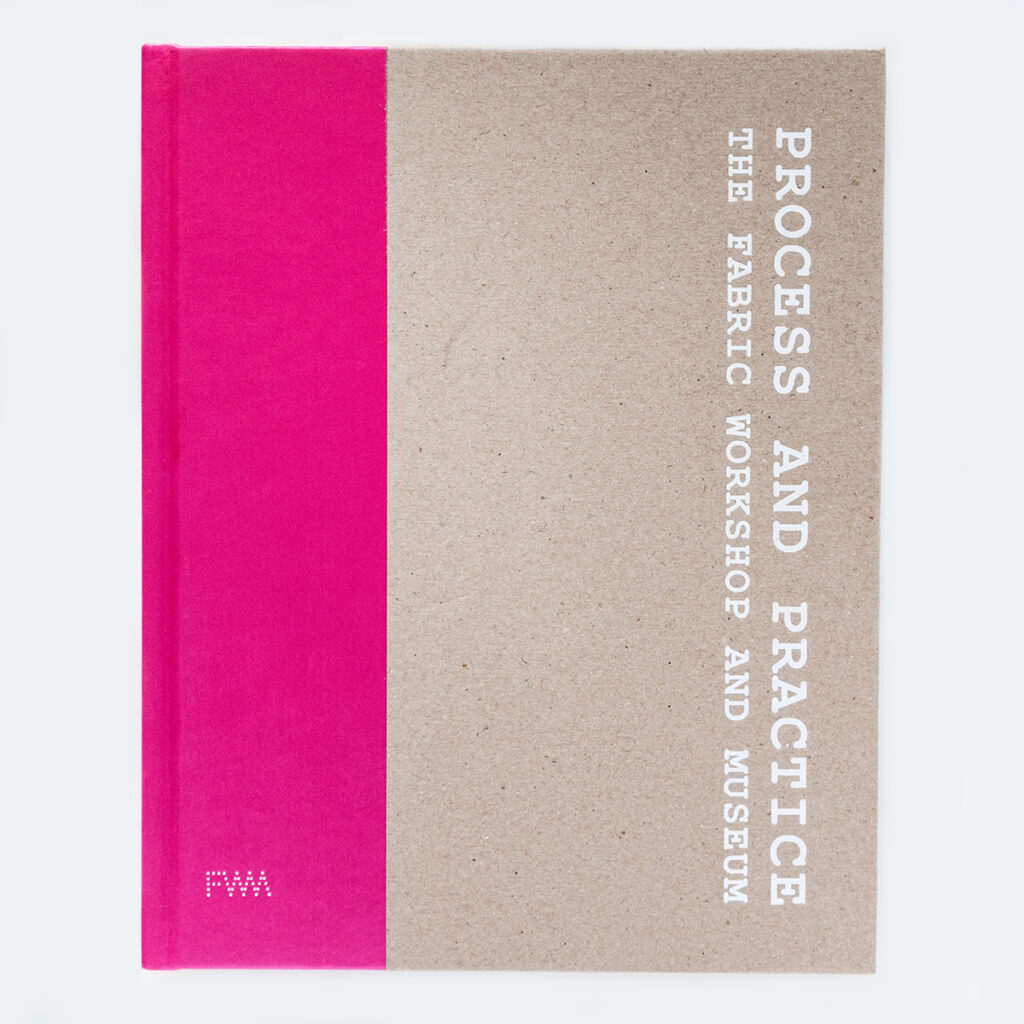During her residency at FWM, Senga Nengudi became interested inPennsylvania’s, and FWM’s, rich history with textile production. She visited several local textile mills—including MTL (Material Technology & Logistics), in Jessup, Pennsylvania; Langhorne Carpet in Penndel, Pennsylvania; and Scalamandré, then located in Long Island City, New York—and was intrigued by the repetitive motion and sounds of textile manufacturing. During these visits, with the generous cooperation of the mills, Nengudi collected video footage and sound recordings as well as hundreds of Jacquard punch cards. She then invited composer Butch Morris to take the audio recordings from the textile mills and turn the ambient sounds into a composition to accompany the video projections. The resulting installation, Warp Trance, a four-channel audio and video montage of sounds and images derived from industrial weaving mills, evoked ritual and trance with its repetitive motion and audiovisual rhythms.
Warp Trace was Nengudi’s first work employing video. She had long focused primarily on discarded, everyday materials with associations reaching further than a viewer might initially assume. The Jacquard punch card panels—onto which the Warp Trance video footage is projected—fit perfectly into this category. As well as being a revolutionary step in textile production, the Jacquard loom was also the first machine that used punch cards to control a sequence of operations. Consequently, the cards are considered the initial step in the history of computing hardware as well as a key conceptual precursor to the development of computer programming.

